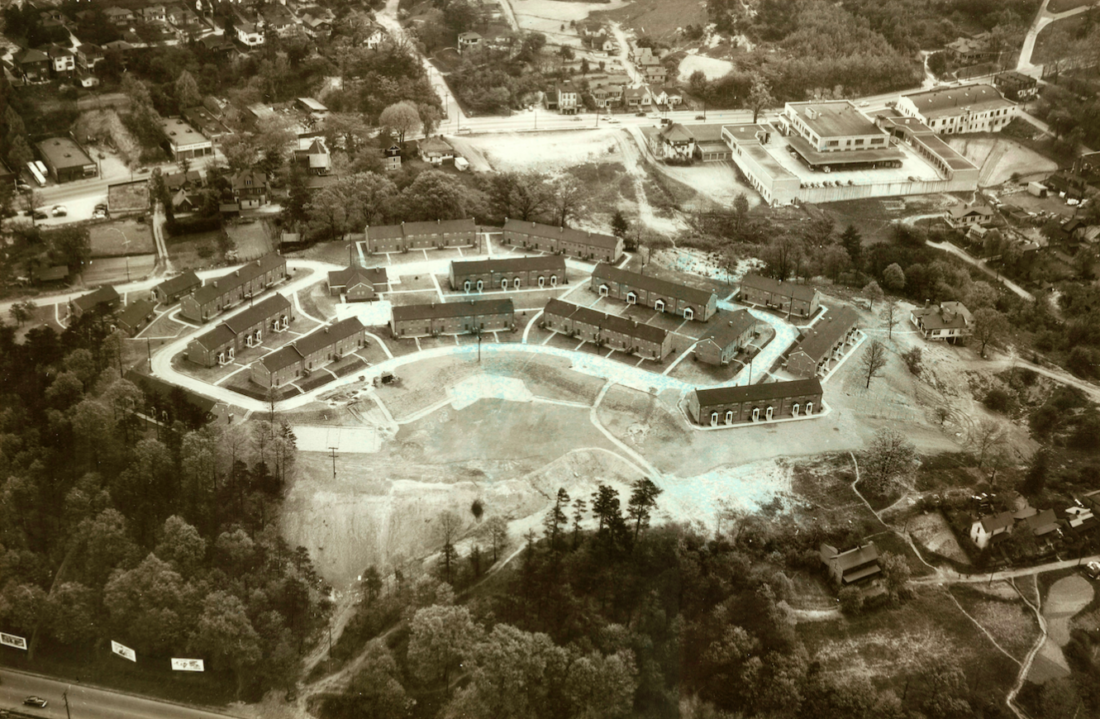On March 12, 1950, the Sunday edition of the Asheville Citizen-Times reported that the Asheville Housing Authority was seeking bids “on construction of its first low-rent housing project.” The then-unnamed development, built during segregation and intended for Black residents, would be composed of 96-units on 12.5 acres at the intersection of Southside Avenue and Coxe Avenue Extension.
Nine months later, while still under construction, the Asheville Housing Authority selected the project’s name: Lee-Walker Heights. The designation, recommended by the Negro Advisory Council, paid homage to two deceased Black residents, Walter S. Lee, former principal of Stephens-Lee High School, and Dr. John W. Walker, founder of Circle Terrace Sanatorium.
The selection was not universally praised. On Jan. 14, 1951, in a letter to the editor, one V.S. McDowell criticized the choice. “I am convinced that the vast majority of our Negro citizens are strongly opposed to the name,” he wrote, objecting to the selection’s perceived favoritism. According to McDowell, Dr. Robert B. Hendrick, head of the Negro Advisory Council, was Lee’s brother-in-law. Meanwhile, the same relationship connected Lee to Walker.
“Many of us believe Dr. Hendrick’s committee should have invited suggestions from all Negro citizens and made a genuine effort to select a name that would be both fitting and popular,” McDowell wrote.
Others in the community approved the name. Fellow resident Ernest B. McKissick responded to McDowell’s criticism in a Jan. 17 letter to the editor. McKissick praised the Negro Advisory Council’s decision, declaring the name “proper and fitting for these great citizens of Buncombe County.”
In his letter, McKissick went on to encourage city officials to consider recognizing the contributions of additional Black residents by renaming schools in their honor. Names included Mamie Martin (the first Black teacher in Buncombe County to retire from service), Maggie Jones (a dressmaker and former member of the African American beautification club), Rachel Battle (former principal of Livingston Street School), Hattie Swan (former Stephens-Lee teacher), J.H. Michael (former principal of Hill Street School) and the Rev. E.W. Dixon.
On May 25, 1951, both Hendrick and Mayor Earl W. Eller spoke at the Lee-Walker Heights dedication ceremony. In the following day’s paper, The Asheville Citizen featured a summary of their speeches. According to the article, Eller’s opening remarks “stressed the social significance of better housing for all peoples.” Hendrick’s subsequent speech focused on similar themes, noting “the social value of the project and what it means in lifting living conditions for a large number of people.”
The same article also reported that Mrs. W.S. Lee and Mrs. W.J. Walker, “widows of the men for whom the project is named,” participated in the day’s event. The dedication concluded with the Stephens-Lee High School band playing “The Star-Spangled Banner.”
Not long after the dedication, on June 28, 1951, new Lee-Walker Heights resident L.C. Lindsey wrote a letter to the editor praising the complex. “A few years ago I read an article in the paper concerning these buildings but did not give it much attention,” Lindsey expressed. “Now it has come to a reality — like a dream come true.”
Editor’s note: Peculiarities of spelling and punctuation are preserved from the original documents.



Great article. I had no idea that public housing started way back in the early 1950’s. Thought it was primarily a Johnson Great Society thing.
One of the issues I always had with public housing in the past was that much of it was not maintained well…either by residents or housing authority or both. Many that I saw were rundown looking on the outside and I suspect the inside was similar in condition.
I always maintained that people that are granted subsidized housing should be expected to perform sweat equity with upkeep, landscaping, etc. They might need guidance/instruction/expectations set but it could develop into lasting skills and pride of residence.
the Housing Authority of Asheville was chartered in 1940 by the segregationist democrackkks who STILL operate the plantations!
Asheville has MORE public housing per capita than any other city in NC yet only the 7th largest…evil democrackkks devoured this town…still do…
Enlightened Enigman, Don’t you have something better to do than endlessly rant about how evil the democrats are and how awful local government is? Do you have a job? Where did your enlightenment come from? You seem to be one miserable person.